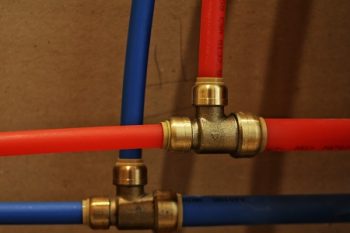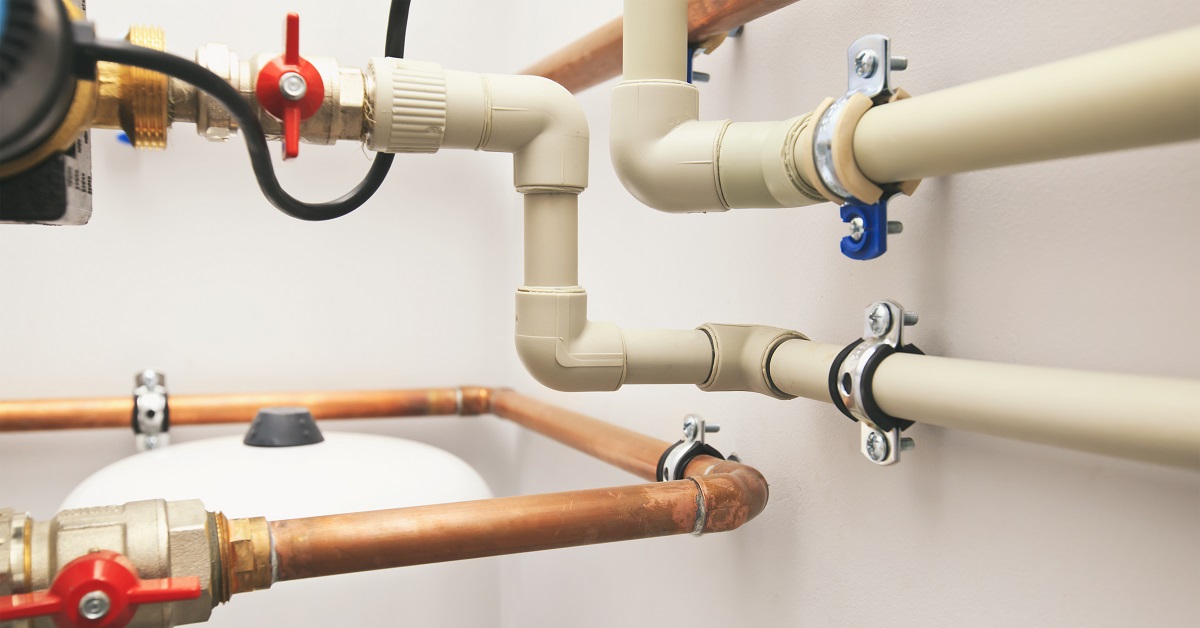What Type of Plumbing Pipes Do I Have?
Picture a plumbing system and one probably conjures an image of iron pipes arranged in a pretzel web jetting over, under and around each other. These criss-crossing channels shaking and groaning within the bowels of the house might seem byzantine but actually every house has an intricate network of supply, drainage, waste and venting systems working to bring water to and waste from the house.
Before 1960, most houses used a cast iron pipe drain and waste system with galvanized water supply. These types of pipes were highly susceptible to corrosion and rust and would need to be replaced every few decades. Today, most of these pipes have been replaced by durable plastic piping counterparts like PVC, CPVC, PEX and ABS.
Knowing which types of pipe manage which types of plumbing comprises an indispensable education for the homeowner or the DIY fiend. When you find a perplexing pipe in your home, trust in Portland’s premier plumbing professionals at Service Plus Plumbing to provide you with the facts and the manpower to deal with any emergent plumbing issues.
Modern Plumbing Systems
PVC Pipes
Polyvinyl chloride or PVC plastic is the most popular choice of plastic pipes on the market today. This cheap, durable, flexible material in eggshell white makes it the jack-of-all-trades pipe, equally able to perform drain, waste and venting purposes with ease. It comes in two grades of thickness, Schedule 40 or Schedule 80. The former deals with residential plumbing, the latter is employed in industrial plumbing installations.
Fitting PVC together can require slip joints or threaded joints. Slip joints slip on and off, as the name implies. Thread joints require screwing each piece on the last.
Depending on the type of joints, a different adhesive will be required. Primer and cement usually fix slip joints together permanently, once the cement has been applied and dried, the only way to replace the pipe is by cutting it out. Meanwhile thread seal tape and joint compound (“PFTE tape” and “joint dope” in plumber vernacular, respectively) allow threaded joints to unscrew as needed while still providing a waterproof seal. PVC Fittings Online has a comprehensive how-to for the curious.
CPVC Pipes
An alternative to PVC is CPVC. The extra C stands for chlorinated. It’s a little bit like PVC+ in that it features higher heat tolerance (200 degrees F vs 140 degrees F), has a cream color hue and uses different adhesives than PVC. It also costs more, meaning replacement jobs will cost more. When considering CPVC, it is important to acknowledge some of these benefits may not be pertinent to a residential home. However, knowing the difference between PVC and CPVC means you can avoid headaches over what types of piping you have.
ABS Pipes
Acrylonitrile butadiene styrene is a black pipe used mostly for waste and drainage systems. It is often confused as a black variant of PVC, but is actually a sturdier, thicker material. It’s fittings are threaded on with their own variant of pipe cement. ABS needs no primer, but make sure the pipe cement is specifically for ABS.
PEX Pipes

PEX Pipes are commonly used for hot and cold water lines.
Cross-linked polyethylene or PEX piping is the standard for water lines. It comes in different colors, but is most often seen in red, for hot water supply, and blue, for cold water supply. These pipes are even bendier than PVC and can feed water around corners without the need of corner joints. Of course, if joints are required, they will need to be planned carefully. PEX fittings are the ultimate finger trap. Once a PEX pipe is inserted into a fitting, it will not come out, no matter what you try. If you need PEX piping replaced, it is advised to let an expert plumbing technician to work PEX piping systems.
Antique Plumbing Systems
Cast Iron and Galvanized Pipes
As already mentioned, cast iron piping is susceptible to corrosion and rust due to the basic math that iron oxidizes when continually exposed to water. However, it was the once industry standard for draining and waste plumbing. Galvanized piping, meanwhile, was once a standard for water supply and drain lines. As a zinc coated steel pipe, it was slightly more resistant to rust.
Even still, these two pipes durability against other materials made replacing them wholesale a costly enterprise. If you find a cast iron or galvanized steel pipe burst or suffering from another plumbing emergency, Service Plus Plumbing can replace it with an ABS or PVC section.
Rigid Copper Pipes
The orange-brown hued Copper pipe, while still used today, is slowing being phased out by the arrival of PEX piping. However, copper lines are still the industry standard for water heaters. Because the fittings and joints require soldering on rather than a simple snap function, copper instantly becomes less DIY friendly–one mistake means pipes will need to be cut out, replaced and soldered on again the right way.
While copper is corrosion resistant, that does not mean it is corrosion-proof. Copper plumbing in particular suffers from “formicary corrosion” which leads to pinhole leaks harder to detect. Once again, they will need replacing as soon as possible and it will not be easy. Call Service Plus Plumbing today and have your leaky copper pipes replaced by a licensed plumber.
Top Plumbing Service Portland
Service Plus Plumbing have provided the plumbing expertise in Portland for over 20 years. When it comes to modern and antique plumbing systems, we know the ins and outs of each. Sprung a leak? Need a pipe replaced? Have a broken water heater? Service Plus Plumbing is ready to do the work and provide you with the peace of mind of a job well done. Contact us today and see why the licensed technicians at Service Plus Plumbing are so highly rated.

